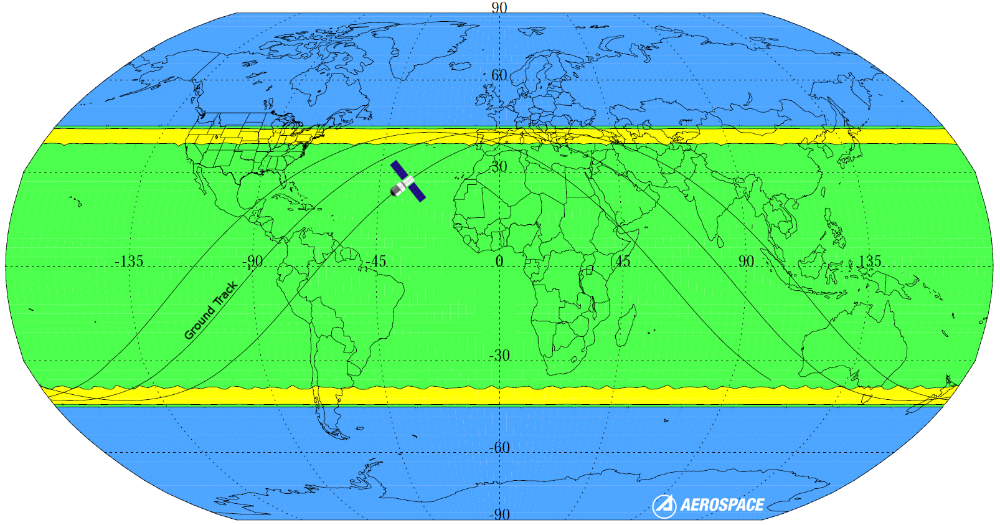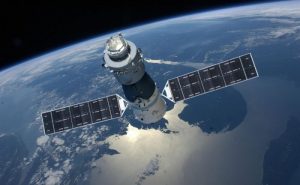
An 8.5 ton Chinese Space Station is flying out of control and is now forecast to crash somewhere on Earth; experts won’t know exactly where until a few hours before impact. The China Manned Space Engineering Office is tracking the failed floating laboratory while the European Space Agency (ESA)’s Space Debris Office is also tracking the crashing space station; it believes it will now make impact on Earth between March 29 to April 9.
Aerospace Corporation is also tracking the falling satellite. They’ve updated their website to reflect where the space station is most likely to crash, if it makes it all the way to the Earth’s surface. They write, “There is a chance that a small amount of Tiangong-1 debris may survive reentry and impact the ground. Should this happen, any surviving debris would fall within a region that is a few hundred kilometers in size and centered along a point on the Earth that the station passes over. ”
Launched on September 29, 2011, the Tiangong-1 was China’s first space station. It conducted six successive rendezvous and dockings with Chinese spacecraft Shenzhou-8, Shenzhou-9, and Shenzhou-10. It has completed almost 35,000 orbits in the time since it was launched into space. In June of 2016, an amateur space observer noticed the space station was out of control. Thomas Dorman, who has been documenting flyovers of the spacecraft using telescopes, binoculars, video and still cameras, a DVD recorder, a computer and other gear, told Space.com then, “”If I am right, China will wait until the last minute to let the world know it has a problem with their space station.”

Last May, China informed the United Nations of the problem station. In a letter, Chinese officials wrote, “On 16 March 2016, the Tiangong -1 Target Manned Space Vehicle ceased functioning. It had fully fulfilled its historic mission. To date, Tiangong-1 has maintained its structural integrity. Its operational orbit is under constant and close surveillance by China. Its current average altitude is 349 kilometres and it is decaying at a daily rate of approximately 160 metres. Its re-entry is expected between October 2017 and April 2018. According to the calculations and analysis that have been carried out, most of the structural components of Tiangong-1 will be destroyed through burning during the course of its re-entry. The probability of endangering and causing damage to aviation and ground activities is very low.”
Harvard University astrophysicist Jonathan McDowell spoke to British newspaper “The Guardian” about the risk of the space station crash. “You really can’t steer these things,” he said. “Even a couple of days before it re-enters we probably won’t know better than six or seven hours, plus or minus, when it’s going to come down. Not knowing when it’s going to come down translates as not knowing where its going to come down.” McDowell said a slight change in atmospheric conditions could nudge the landing site “from one continent to the next”. While most of the eight tons of space station would burn up as it passes through the atmosphere, McDowell said some parts, such as the rocket engines, were so dense that they wouldn’t burn up completely. “There will be lumps of about 100kg (220 pounds) or so, still enough to give you a nasty wallop if it hit you,” he said. “Yes there’s a chance it will do damage, it might take out someone’s car, there will be a rain of a few pieces of metal, it might go through someone’s roof, like if a flap fell off a plane, but it is not widespread damage.”
In their written statement to the United Nations, China said they “will issue the relevant information and early warning in a timely manner and bring it to the attention of the United Nations Office for Outer Space Affairs and the Secretary-General of the United Nations by means of note or verbal through diplomatic channels.”